
A ghost town, deserted city, extinct town, or abandoned city is an abandoned settlement, usually one that contains substantial visible remaining buildings and infrastructure such as roads. A town often becomes a ghost town because the economic activity that supported it has failed or ended for any reason. The town may also have declined because of natural or human-caused disasters such as floods, prolonged droughts, extreme heat or extreme cold, government actions, uncontrolled lawlessness, war, pollution, or nuclear and radiation accidents and incidents. The term can sometimes refer to cities, towns, and neighborhoods that, though still populated, are significantly less so than in past years; for example, those affected by high levels of unemployment and dereliction.
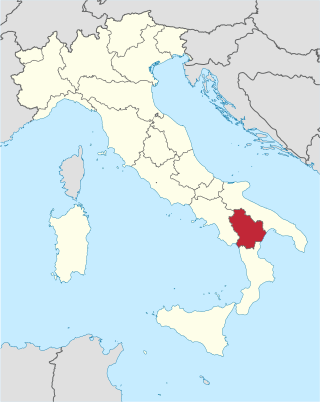
Basilicata, also known by its ancient name Lucania, is an administrative region in Southern Italy, bordering on Campania to the west, Apulia to the north and east, and Calabria to the south. It has two coastlines: a 30-km stretch on the Tyrrhenian Sea between Campania and Calabria, and a longer coastline along the Gulf of Taranto between Calabria and Apulia. The region can be thought of as the "instep" of the "boot" of Italy, with Calabria functioning as the "toe" and Apulia the "heel".

Avigliano is a town and comune in the province of Potenza, in the southern Italian region of Basilicata.

Vizzini is a town and comune in the Metropolitan City of Catania, on the island of Sicily, southern Italy. It is located 60 kilometres (37 mi) from Catania in the Hyblaean Mountains, on the most northwesterly slopes of Monte Lauro.
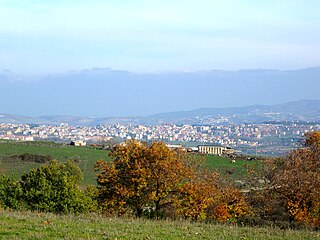
Rionero in Vulture is a town and comune in the province of Potenza, in the southern Italian region of Basilicata. It is located on the slopes of Monte Vulture in the northern part of the region. The village was founded and historically inhabited by the Arbëreshë minority, who no longer retain the language and the cultural Arbëreshe heritage.

Forenza is a town and comune in the province of Potenza, Basilicata, southern Italy. It is bounded by the comuni of Acerenza, Avigliano, Filiano, Ginestra, Maschito, Palazzo San Gervasio, Pietragalla, Ripacandida.
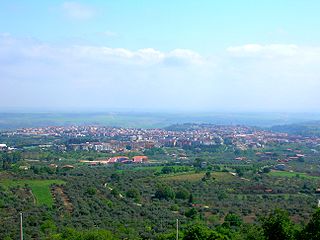
Venosa is a town and comune in the province of Potenza, in the southern Italian region of Basilicata, in the Vulture area. It is bounded by the comuni of Barile, Ginestra, Lavello, Maschito, Montemilone, Palazzo San Gervasio, Rapolla and Spinazzola. It is one of I Borghi più belli d'Italia.

Potenza is a comune in the Southern Italian region of Basilicata.

Palazzo Adriano is a town and comune of Arbëresh origin in the Metropolitan City of Palermo, Sicily, southern Italy.

Altino is a comune and town in the province of Chieti in the Abruzzo region of southern Italy. It is located on a rock spur commanding the valley of the Aventino river. The valley is richly cultivated with orchards, fruit, grapes and olives.
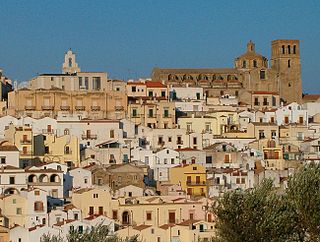
Ferrandina is a town and comune in the province of Matera, in the Southern Italian region of Basilicata. It is a center for production of high quality olive oil.
Salandra is a town and comune in the province of Matera, in the Southern Italian region of Basilicata.

San Mauro Forte is a town and comune in the province of Matera, in the Southern Italian region of Basilicata.

Maratea is an Italian town and comune of Basilicata, in the province of Potenza. It is the only comune of the region on the Tyrrhenian coast, and is known as "the Pearl of the Tyrrhenian". Owing to the considerable number of its churches and chapels it has also been described as "the town with 44 churches". It is one of I Borghi più belli d'Italia.

Nemoli is a town and comune of 1,501 inhabitants, found in the province of Potenza, in the Southern Italian region of Basilicata. The town, positioned between the Apennine Mountains, is noted for its artisanal work, typically in wood and copper.
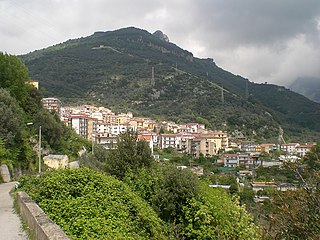
Olevano sul Tusciano is a town and comune in the province of Salerno in the Campania region of south-western Italy.
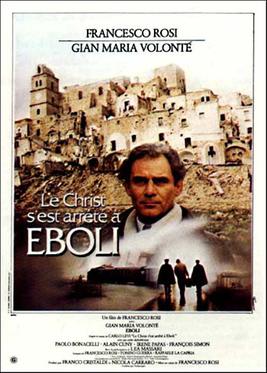
Christ Stopped at Eboli, also known as Eboli in the United States, is a 1979 drama film directed by Francesco Rosi, adapted from the book of the same name by Carlo Levi. It stars Gian Maria Volonté as Levi, a political dissident under Fascism who was exiled in the Basilicata region in Southern Italy.

Carmine Crocco, known as Donatello or sometimes Donatelli, was an Italian brigand. Initially a soldier for the Bourbons, he later fought in the service of Giuseppe Garibaldi.
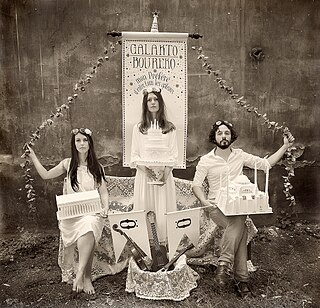
Ödland is a French band from Lyon consisting of composer-songwriter Lorenzo Papace, and sisters Alizée Bingöllü and Léa Bingöllü. They have self-produced two albums: Ottocento (2010) and Sankta Lucia (2011).
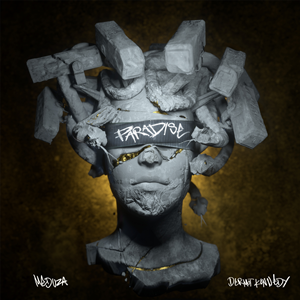
"Paradise" is a song by Italian production trio Meduza, featuring vocals from Irish singer-songwriter and musician Dermot Kennedy. It was released on 30 October 2020 by Island. The song was written by Conor Manning, Dan Caplen, Dermot Kennedy, Gez O'Connell, Joshua Grimmett, Luca De Gregorio, Mattia Vitale, Simone Giani and Wayne Hector.

























